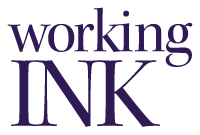Part 1: School and Student Background Data
Write a brief statement why your organization is well-suited to developing an Early College High School for Native Youth.
On August 18, 2005, Effie Kokrine Charter School (EKCS) opened its doors at the Howard Luke Campus in Fairbanks, Alaska. Named for a prominent Athabascan leader who taught cultural education for many years, Effie Kokrine Charter School is governed by an Academic Policy Committee made up of parents, teachers, community members, University of Alaska faculty, and members of the local school board all of whom played roles in the development of the EKCS program. The Fairbanks Native Association serves as the initial 501(c)3 sponsoring organization for the school, though EKCS operates as a public school with a governing board of its own, established under a charter approved by the Fairbanks North Star Borough School District (FNSBSD) and the Alaska State Board of Education.
The EKCS School, open to all students in the FNSBSD grades 7-12, was created by the above group over several years to address the on-going academic challenges of Native students in Fairbanks North Star Borough schools. As such the mission of the Early College program, “Merging culture, high school and college to create pathways of academic success for Native American students” is already linked to the goals of Effie Kokrine Charter School. On opening day, the student enrollment exceeded the minimum funding eligibility target of 150 for full state funding as a Charter School, with enrollment continuing to grow. Currently, 87% of the student body is Native and the teacher-to-student ratio is 1/18. The curriculum of the school is designed to provide students with a strong foundation in Native cultural traditions as well as to prepare them for academic success in the larger society.
EKCS collaborates with the University of Alaska (UA) system which already allows FNSBSD students to earn college credits as they pursue a high school diploma. As a statewide system, UA allows students opportunities to continue their four year degree locally, as well as at campuses in other parts of the state such as Anchorage or Juneau. Currently, dual credits are available for high school students via our relationship with the Interior-Aleutians Campus (IAC), the Tanana Valley Campus (TVC), and the main campus of the University Alaska Fairbanks (UAF), either at their respective locations or via distance delivery systems. EKCS students are within walking distance of the IAC administrative offices and UAF main campus, where they can be issued college ID cards, buy textbooks and get access to the state’s largest library. EKCS recognizes that in many ways it is already a “working site” for an early college high school. By expanding these collaborative relationships into more formal, structured partnerships through the Early College High School Initiative, EKCS will do more than provide students the opportunity to pursue higher education, it will insure them the promise of higher education. This Early College mission is congruent with the EKCS mission: “to prepare their students as future community leaders.” By joining the Early College High School Initiative, EKCS will be better equipped to fight the high drop-out rates, low reading scores and poor self-esteem that are endemic among Native students.
